HAWAIIAN CANOE CROPS
What Polynesian Settlers Brought To Hawaii
Hawaiian Canoe Crops
This Hawaiian Canoe Crops collection features many useful plants that the Polynesian settlers brought to Hawaiʻi in their voyaging canoes when they migrated here approximately 2,000 years ago. Botanists believe that these ancient mariners may have brought with them as many as 25 species of plants.
These plants provided the resources essential in every aspect of the Hawaiian culture including food, shelter, clothing, medicine, ceremony, and recreation. As you tour this collection, you will become acquainted with examples of the important plants that allowed the Hawaiian culture to thrive in these beautiful islands.
Ipu • Pia • ʻApe • Hoi • ʻAwapuhi • ʻOlena • Uhi
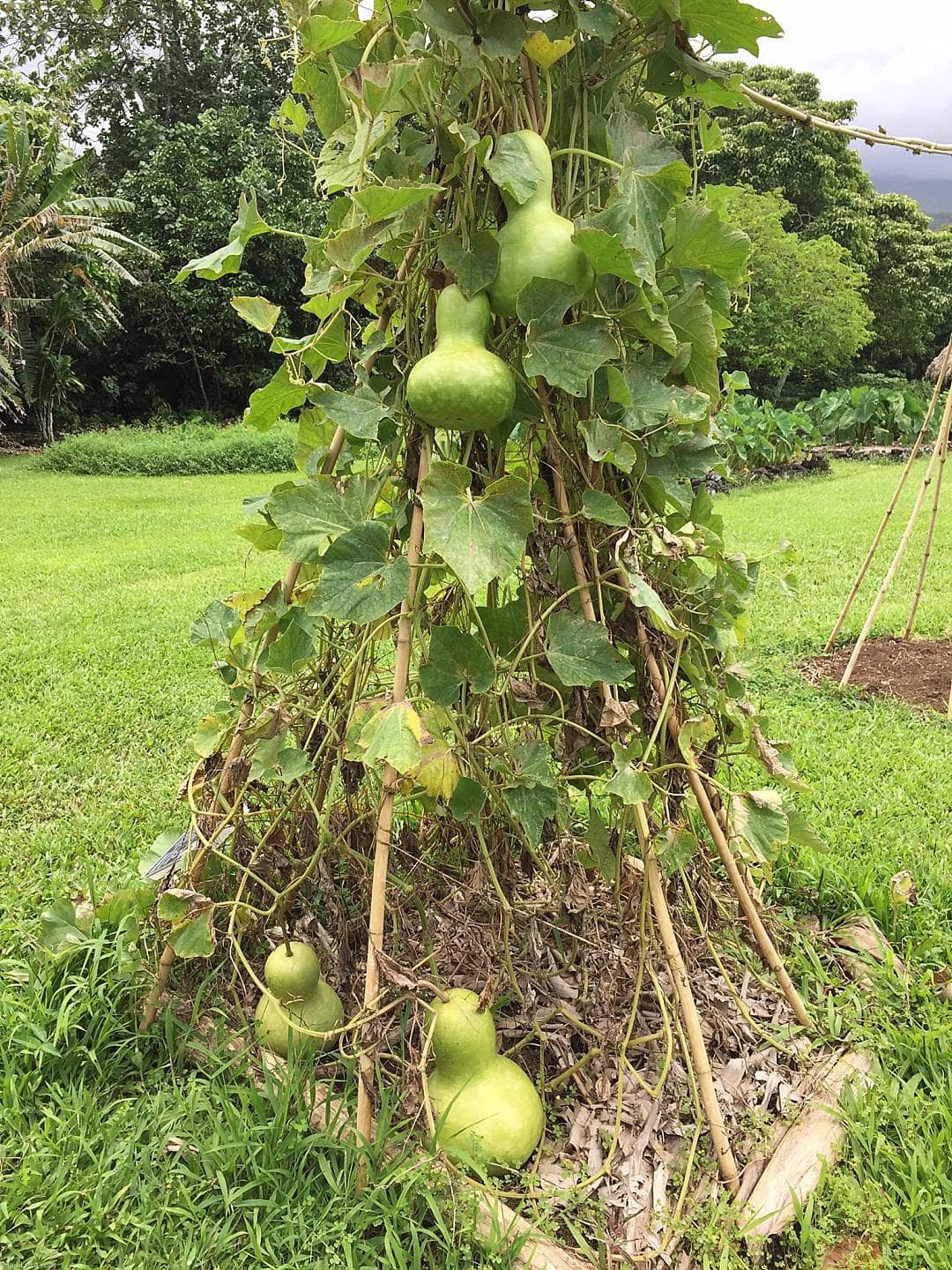
IPU – Bottle Gourd
Lagenaria siceraria
(Molina) Standl.
Cucurbitaceae, Gourd Family
Polynesian Introduced

Different varieties of the ipu vine produce gourds of all shapes and sizes. These gourds are filled with seeds much like squashes and pumpkins, close relatives of the ipu plant.
As you would guess, the dried gourd is very useful in Hawaiian culture as a container. Ranging from small ipu that can fit in your hand, which are used to make flutes, to the large ipu nui, which are used as storage containers, all sizes of ipu lend a use. Huewai is a particular type of ipu that is used for carrying water. Some ipu are decorated with intricate designs or shaped with cordage by constricting their growth, both creating very artistic ipu containers. The most well-known use of the ipu is in hula as a percussive instrument often seen at Maui luaus.
PIA – Polynesian Arrowroot
Tacca leontopetaloides (L.) Kuntze
Taccacae, Tacca Family
Polynesian Introduced
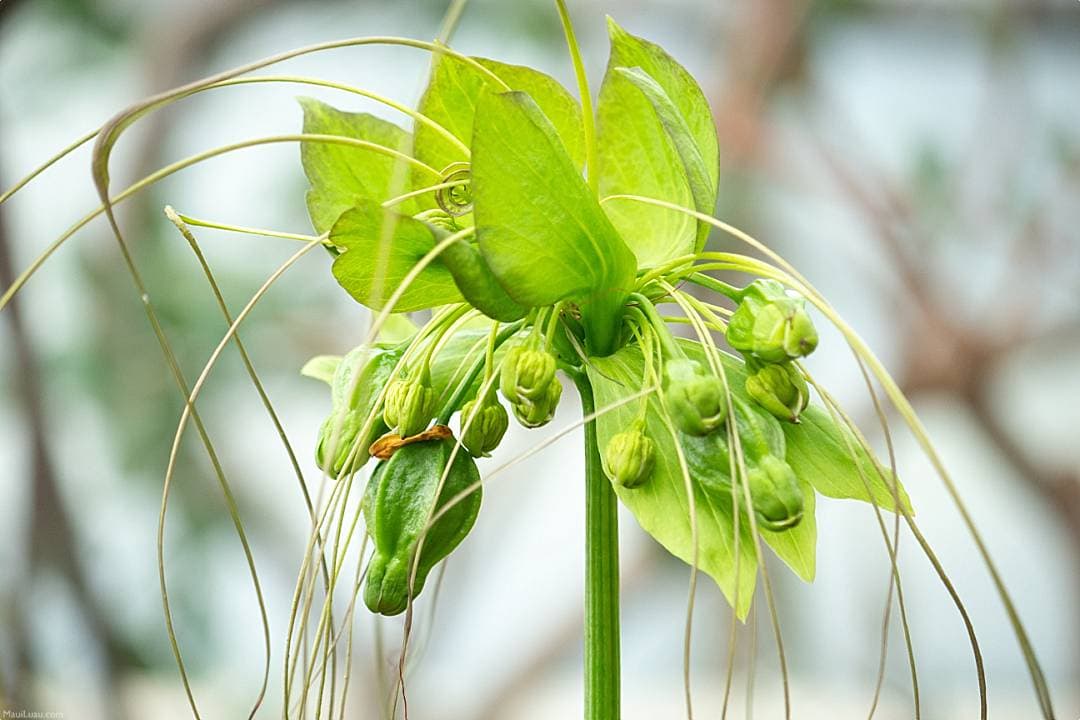
Most of the year pia is sleeping underground as a dormant tuber, but in the spring and summer the pia will send up shoots and an exotic flower that can dazzle spectators who are in the right place at the right time.
Pia tubers are grated and rinsed in fresh water repeatedly to procure a starch. This starch is used in the delicious coconut pudding dessert called haupia. This starch was also used in recent times as a laundry starch. Some of the medicinal uses of pia include remedies for diarrhea and dysentery.
ʻAPE – Elephant’s Ear
Alocasia macrorrhiza (L.) Schott
Araceae, Aroid Family
Polynesian Introduced
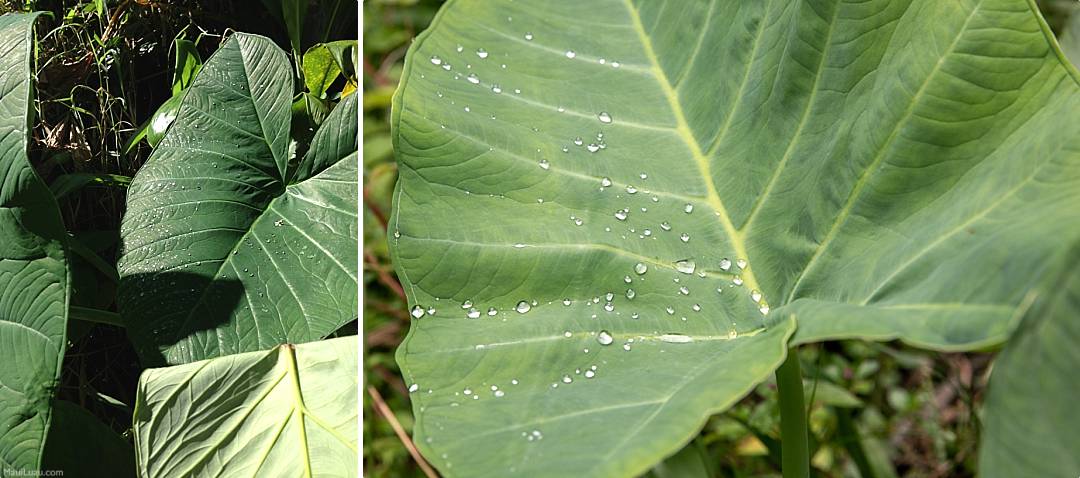
This plant is a close relative of taro and resembles it quite a bit in the shape of its leaves. One can distinguish these plants by remembering that ʻape leaves tend to point upwards while kalo leaves point downwards.
HOI – Bitter Yam
Dioscorea bulbifera L.
Dioscoreaceae, Yam Family
Polynesian Introduced
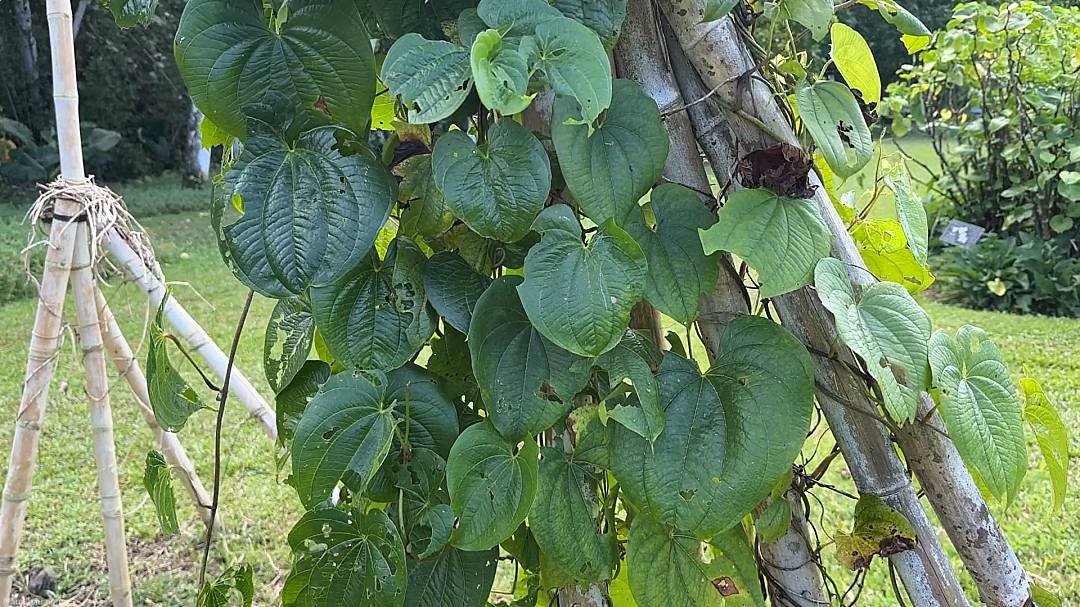
The hoi vine is a type of yam that produces poisonous aerial tubers. When prepared correctly (by a process of cooking and repeated rinsing) these bitter tubers were eaten during times of famine.
“Ulu ka hoi.”
The hoi vine grows.
There is interest in what is going on.
A play on hoihoi (interest).
ʻAWAPUHI – Shampoo Ginger
Zingiber zerumbet (L.) Sm.
Zingiberaceae, Ginger Family
Polynesian Introduced
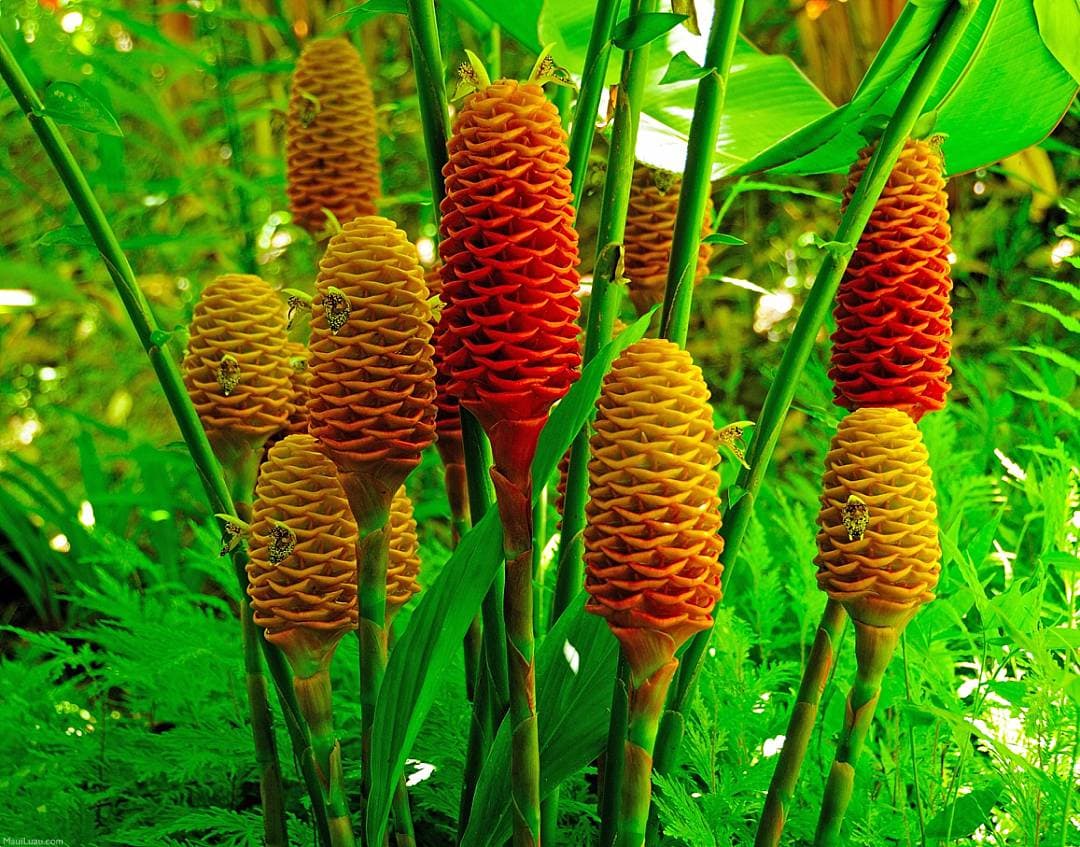
ʻAwapuhi grows in damp forested areas. This ginger has short leaves ranging from one to two feet tall and a flowering head that is filled with an aromatic sap used as a hair conditioner traditionally and commercially. Children still playfully pick and use ʻawapuhi when cooling off in mountain streams.
Medicinally, the ashes of the ʻawapuhi leaf are combined with bamboo and the juice of the kukui nut to treat cuts and sores.
ʻOLENA – Turmeric
Curcuma longa L.
Zingiberaceae, Ginger Family
Polynesian Introduced

When not sleeping, the ʻolena sends up delicate, light green leaves. Like other gingers, the white blossom of the ʻolena is tucked away beneath the foliage.
The tubers of the ʻolena have many uses including a cleansing concoction when mixed with salt water for blessing ceremonies, medicinal properties for treating ear infections, and bright yellow/ orange dyes for decorating kapa.
“Pua ʻolena, pua moe wale…”
The ever-sleeping ʻolena blossom.
The ʻolena is a seasonal plant.
UHI – Sweet Yam
Dioscorea alata
Dioscoreaceae, Yam Family
Polynesian Introduced
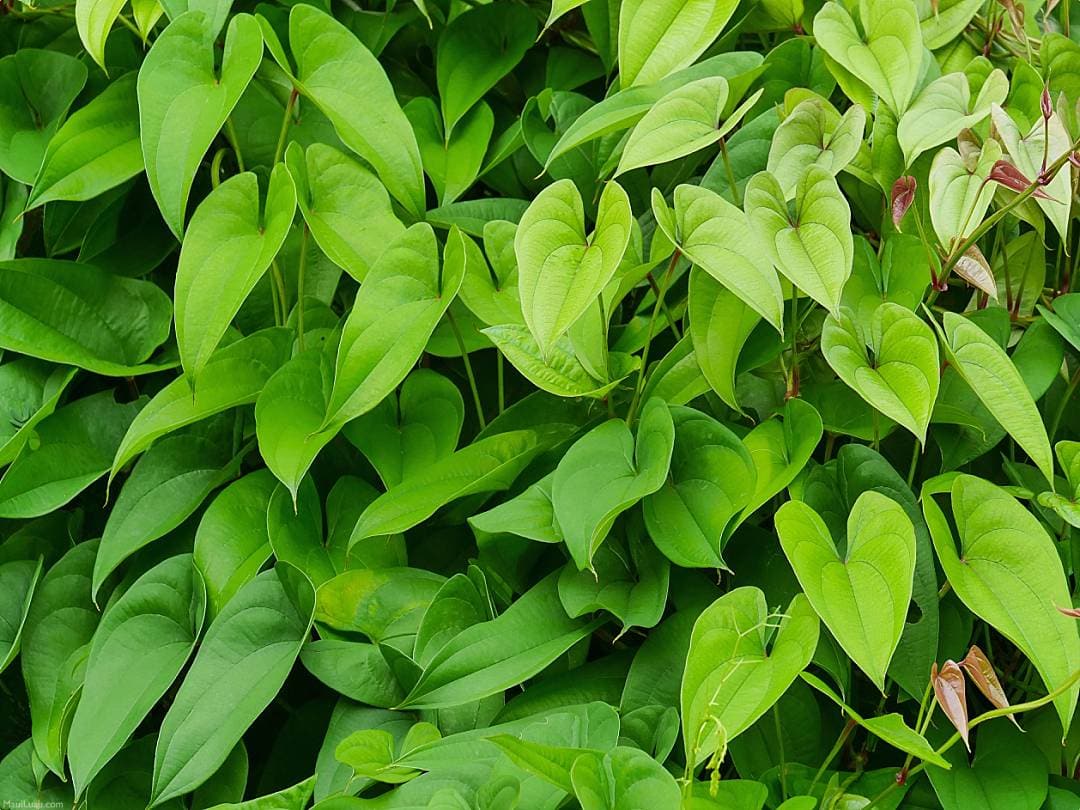
Compared to hoi, this vine was more readily eaten, especially when cooked in an imu, or underground oven. Its square stems and winged leaves differentiate it from the rounded leaves and stems of the less desirable hoi vine. The plant tends to grow vigorously in the forest, often spreading over existing forest trees. The name is fitting, as uhi in Hawaiian translates to “engulf” or overwhelm”.
Samuel M. Kamakau, the Hawaiian historian wrote the following in the Hawaiian language newspaper, Ke Au ʻOkoʻo, on December 8, 1870:
“Hana was a fertile land where taro, sweet potatoes, bananas, sugar cane, and wild fruit grew in abundance, and there was always food to be had. Kawaipapa was rich in fish from the ponds and from the sea. The lands of Honomaʻele and Kaʻeleku supply the ʻohiʻa (Metrosideros macropus) wood and ʻieʻie (Freyci-netia arborea) vines.”
A big Mahalo to Kahanu Garden for their teachings about the Hawaiian Canoe Crops. Learn more about Kahanu Garden History.
Ka'anapali
Whether you're looking for a family luau or a more romantic Maui luau, West Maui's Kaʻanapali have some of the best!

MAUI LUAU COMPARIson CHART
We’ve been to all the luaus in Maui, and we’ve put together a list of our favorites along with each characteristic compared side by side to help you choose!
WHAT IS A LUAU?
Exactly what to expect and why you should go!
WHAT TO EAT?
See common dishes served at Maui luaus.
FIRE DANCING
The history and variations of Polynesian fire dancing.








